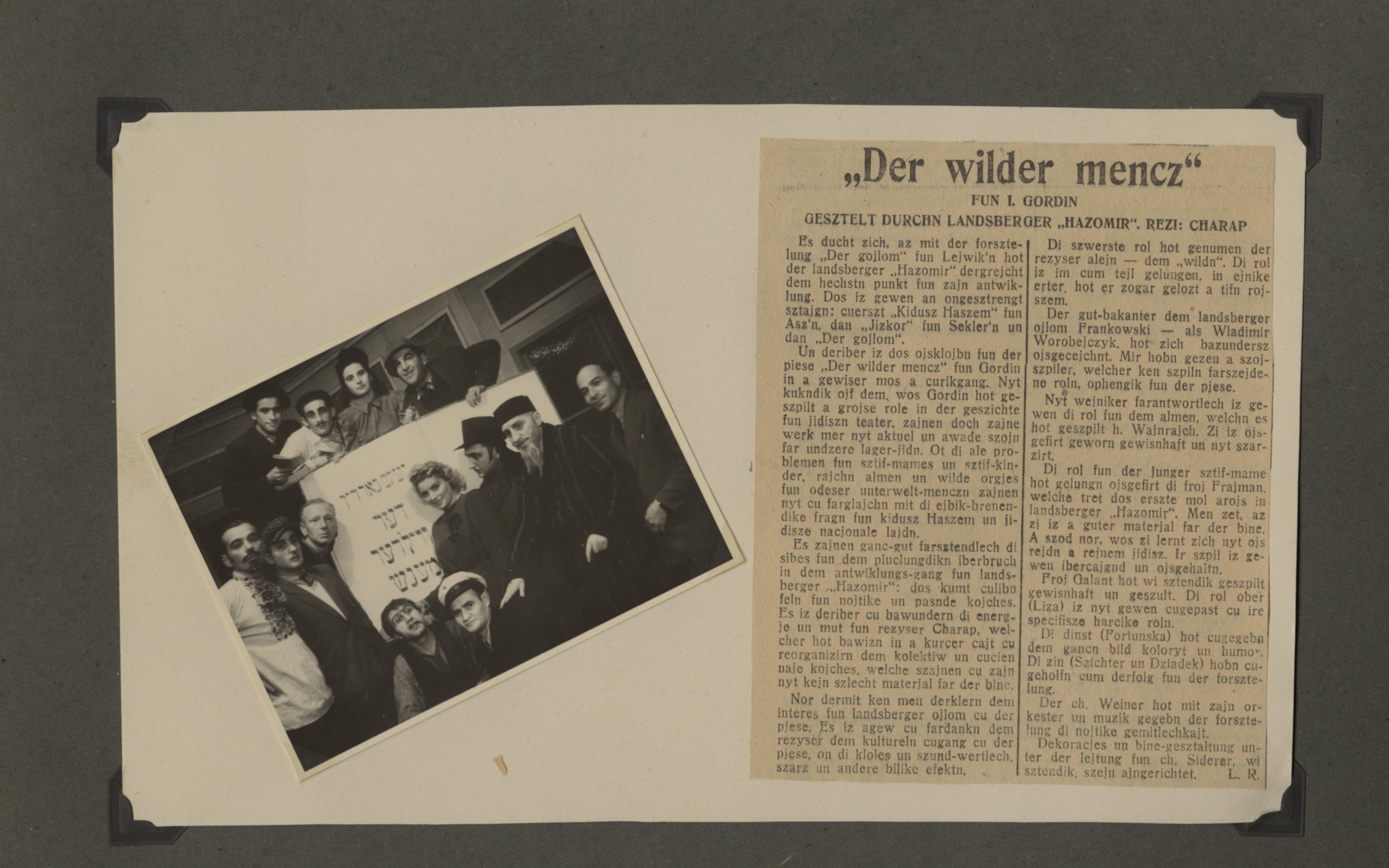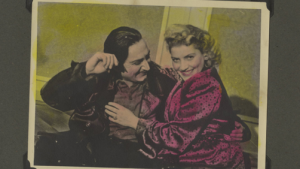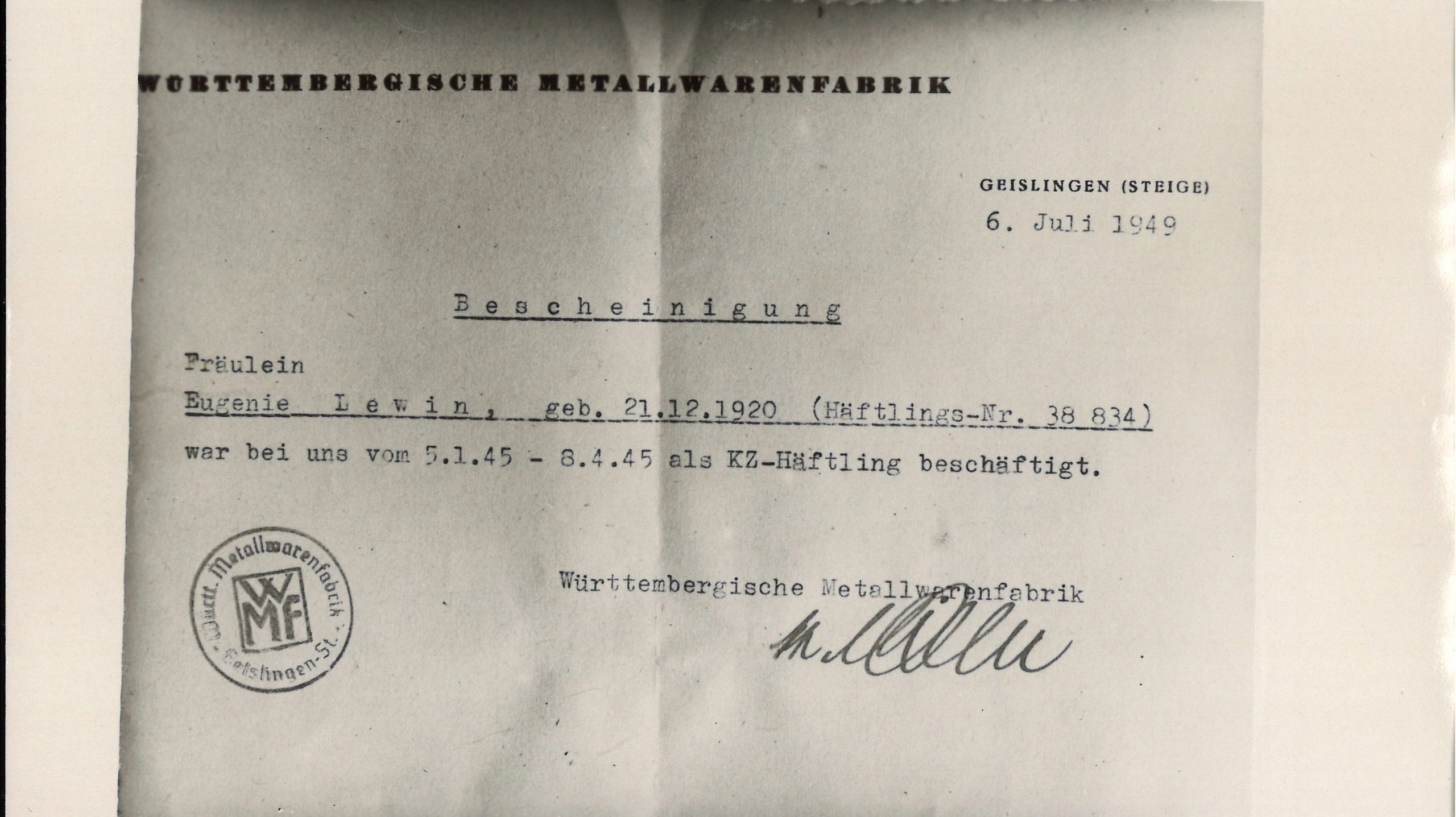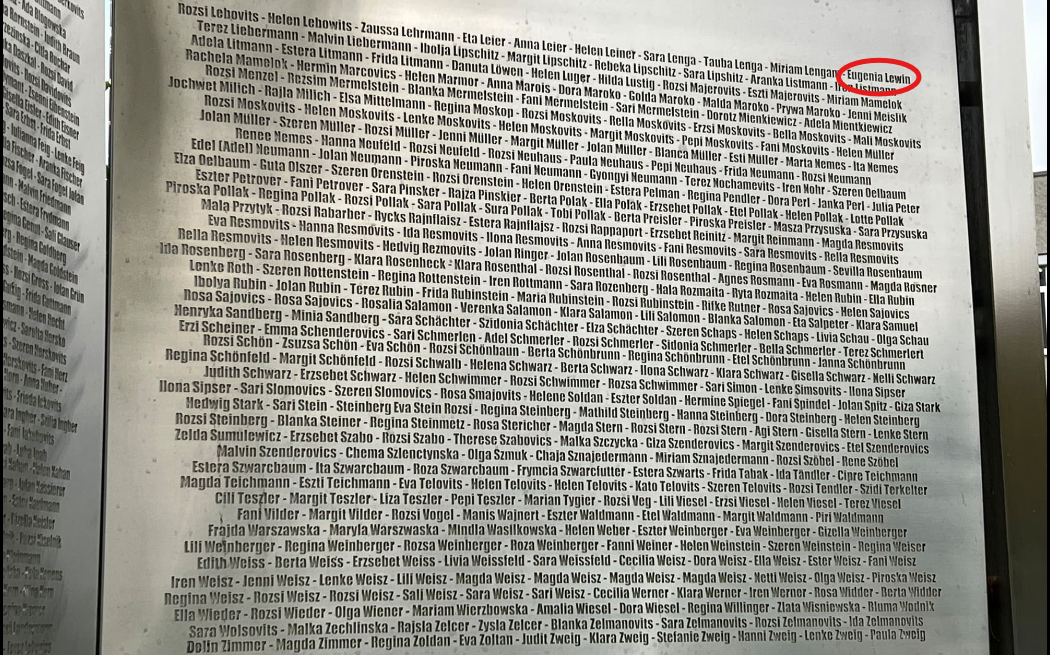Numerous projects in the recent past have recounted the lives of Holocaust survivors who immigrated to Minnesota after World War II, with many of which telling the stories of dozens of survivors and their postwar lives in the Twin Cities. Not all survivor projects are as sweeping as these, however they are just as important.
I was able to work on one such project this summer with the Upper Midwest Jewish Archives (UMJA) in the Libraries: Jeanette Frank, born Eugenia Lewin, is a survivor of the Holocaust whose materials reside in the archives. Jeanette’s records contain extensive materials related to her time as a displaced person in the Landsberg am Lech Displaced Persons (DP) camp after the war. The collection includes vaccination records, records of employment, and, most interestingly, a scrapbook of the Yiddish theater troupe “Hazomir,” that Jeanette, (then Eugenia) was a member of during her time in the camp. Included in the records as well are later documents, including Jeanette’s United States passport and naturalization certificate.
Scrapbook page with image of the entire “Hazomir” theater troupe posing in front of a sign for their production of “Der Wilder Mencz” (The Unusual Person), with accompanying newspaper article about the production in Yiddish at right. Eugenia Lewin/Jeanette Frank pictured middle-row center.
Source:
Jeanette and Kenneth Frank Papers, Upper Midwest Jewish Archives.
Eugenia Lewin/Jeanette Frank with future husband Kaufmann Frankowski,
later Kenneth Frank, while performing in the “Hazomir” troupe.
Source:
Jeanette and Kenneth Frank Papers, Upper Midwest Jewish Archives.
What all these documents point to is that Eugenia Lewin survived the Second World War and the Holocaust. After spending time living and working in the Landsberg DP camp, she was able to immigrate to the United States, settle in St. Paul, MN, and live over 75 years as an American citizen before passing away in 2003. While an incredible story of survival and resilience, this story may seem similar to many others told within UMJA’s archives. So what makes Jeanette Frank’s story so impactful? The fact that within certain historical records, Eugenia Lewin is not believed to have survived at all.
The Yad Vashem database of survivors’ names lists a Eugenia Lewin, born on December 21st 1916, in Lodz, Poland as missing, presumed murdered after being interned in the Lodz ghetto under the Nazi occupation. Yad Vashem cites as a source a list published by the United States Holocaust Memorial Museum (USHMM) that includes names of Holocaust victims who perished in the Lodz ghetto. The records found in UMJA’s archives, however, do not presume murder but in fact show her surviving.
According to the UMJA records, Eugenia Lewin was born on December 21st, 1920, in Lodz, Poland. While it is of course possible that two individuals named Eugenia Lewin were interned in the Lodz ghetto, with one perishing and one surviving, UMJA’s research gives reason to believe that a coincidence like this is not the case.
Letter of Recommendation written for Eugenia Lewin by Württembergische Metallwarenfabrik (WMF) in July 1949. The letter reads: “Ms. Eugenia Lewin, born 21st December, 1920 (Prisoner number 38 834) was employed by us from 5th January 1945-8th April 1945 as a concentration camp prisoner.”
Source:
Jeanette and Kenneth Frank Papers, Upper Midwest Jewish Archives.
Within Jeanette Frank’s collection are various recommendation letters given to her after the war to show that she has skills, making her a good candidate for postwar employment. One of these letters came from Württembergische Metallwarenfabrik (WMF), a German manufacturing company which utilized slave labor under the Nazis. The letter states that Eugenia Lewin worked for WMF from January to April 1945, being labeled prisoner 38834, in the Geislingen an der Steige concentration camp. Upon further research, a Eugenia Lewin was listed on a memorial to slave laborers erected at the site of the Geislingen an der Steige camp, and a USHMM record confirms that a Eugenia Lewin was interned as prisoner 38834 in the complex.
A screenshot of the ‘Namenstafel’ (Name Plaque) erected in memoriam of the female forced laborers interned in Geislingen an der Steige Concentration camp, who were forced to work for WMF between 1944 and 1945. The museum which now stands on the site of the former concentration camp erected this memorial to honor the various women who were sent to Geislingen to work: the circled name above right is Eugenia Lewin, confirming that she was a prisoner at Geislingen after her time in the Lodz Ghetto.
Source:
www.kz-geislingen.de
All of this led me and UMJA Archivist Kate Dietrick, my supervisor for this project, to believe that UMJA’s Eugenia Lewin had survived her time in the Lodz ghetto and was sent to labor in the Geislingen concentration camp. We were left with one more piece of her journey to uncover: how did Eugenia Lewin end up in Landsberg am Lech displaced persons camp, which was located on the other side of Germany?
As I dug further into the fates of forced laborers at Geislingen, I learned that ahead of the Allied forces coming through France, the Nazis sent many slave laborers east from Geislingen to Dachau concentration camp, and to the town of Allach, Germany. Both of these destinations are located just outside of Munich, in southeastern Germany, and are a stone’s throw from the former site of Landsberg am Lech displaced persons camp.
After compiling all of the above evidence, Kate and I sent a letter to Yad Vashem, the world’s Holocaust memory authority located in Israel, supported by scans of documents from Jeanette Frank’s records, to make our case. As of November 2024, Kate heard back from Yad Vashem. In the letter Kate received, Yad Vashem stated that the evidence we provided on Jeanette Frank’s behalf was enough to show her surviving the Holocaust and immigrating to Minnesota. While the revision process can take time, Eugenia Lewin will be removed from Yad Vashem’s Central Database of Shoah Victims’ Names, reflecting the fact that she survived the Holocaust. We were extremely excited to hear the news.
This experience became one that spoke to me both personally and academically. I have been lucky enough to have spent time working both with CHGS and UMJA, two organizations that engage in crucial community-facing work. During my time with them I have seen what it means to do historical research that really affects the present.
Being able to work with Jeanette Frank’s Holocaust journey this summer, with the goal of giving her, effectively, her life back in the eyes of Holocaust remembrance, has shown me that the work that I do as a historian has a very real impact on people today, because history is a study of people and their lives. This hit me hardest when, after mailing the letter earlier in the day, Kate met me at Temple of Aaron Cemetery in St. Paul, where Jeanette Frank and her husband Kenneth, formerly Kaufmann Frankowski, are buried. We laid rocks on the headstone in honor of their memory, and decided to read aloud to them the letter we mailed to Yad Vashem in memoriam.
This experience was a very personal one for me; while we were standing and paying our respects, I could feel the importance of completing this project. It was yet another experience that proved to me that it is this historical work that I want to spend my career doing, and that its effects are great. I am so fortunate to have been able to spend time working with UMJA over this past summer, learning how archival documents are not simply pieces of paper, but pieces of people’s lives. I cannot wait to embark on more projects like this, which educate about the Holocaust, and work to keep the stories of its survivors and victims alive.
Ryken Farr is a junior undergraduate at the University of Minnesota-Twin Cities, majoring in History and Jewish Studies. He is currently the undergraduate student worker with the Center for Holocaust and Genocide Studies and spent time in August 2024 as a student assistant with the Upper Midwest Jewish Archives.





Comments